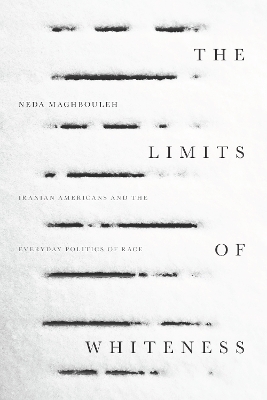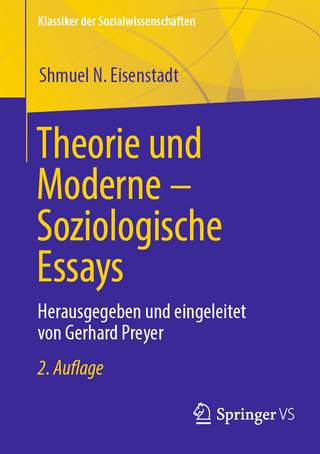
The Limits of Whiteness
Stanford University Press (Verlag)
978-0-8047-9258-5 (ISBN)
By shadowing Roya and more than 80 other young people, Maghbouleh documents Iranian Americans' shifting racial status. Drawing on never-before-analyzed historical and legal evidence, she captures the unique experience of an immigrant group trapped between legal racial invisibility and everyday racial hyper-visibility. Her findings are essential for understanding the unprecedented challenge Middle Easterners now face under "extreme vetting" and potential reclassification out of the "white" box. Maghbouleh tells for the first time the compelling, often heartbreaking story of how a white American immigrant group can become brown and what such a transformation says about race in America.
Neda Maghbouleh is Assistant Professor of Sociology at the University of Toronto.
Contents and Abstracts1Being White chapter abstractChapter 1 describes how race and racism organize Iranian American lives and shows that for liminal racial groups, whiteness is fickle and volatile. The chapter introduces the concepts "racial hinges" and "racial loopholes" to make sense of the contradictory racial experiences of Iranian Americans. Through the narratives of Roya, a second-generation youth, and the controversy over an anti-Iranian poster, this chapter offers the "limits of whiteness" as an analytic to understand racial problems that, when typically extended to Iranians, are integrated as expressions of "anything but race": that is, ethnic and cultural difference, religious intolerance, or anti-immigrant nativism.
2In the Past chapter abstractChapter 2 takes the reader inside the conflicting racial logics of early twentieth-century court cases and the six-month window in the late 1970s when Iranian Americans were made at once legally white and perhaps irrevocably socially brown during and after the 1979 Islamic Revolution. In the twenty-first century, Iranian Americans are trapped in racial loopholes in which they are unable to seek legal recourse for on-the-ground racism in workplaces and street-level hate crimes due to their legal whiteness. With American racism in the twenty-first century increasingly drawing on "color-blind" logic, even the most socioeconomically successful Iranian Americans are sanctioned from full inclusion through subtle means, such as residential architecture and design codes in Los Angeles, California.
3At Home chapter abstractFirst- and second-generation Iranian Americans tend to disagree about one key question: Are Iranians white or not? A little-known feature of the Iranian American community is that first-generation immigrants grew up in an Iranian state in which they were formally taught that Iranians are not only white but also the world's original and most racially pure white people. In the American context, first-generation parents' insistence to their American-born children that Iranians are in fact whiter than the European American white peers who racially harass and bully them at school offers little recourse for second-generation youth. From their perspective, the "Aryan myth" of Iranian whiteness and other expressions of "Persian" pride (which are often anti-Arab) is a distressing expression of ethno-racial elitism that fundamentally misunderstands Iranian Americans' actual position in the racial hierarchy in the United States.
4In School chapter abstractIt is through youth's physical proximity to whiteness that they are convinced that Iranians are not white. Faced with racial harassment and sometimes physical violence, second-generation youth repeatedly learn that their brand of white is not white enough to escape racial harassment. This is reflected in the political and social alliances they form with other racialized peers, in their racialized interactions in classrooms, and in their retreat to "inherited nostalgia" for Iran in co-ethnic safe spaces on college campuses. In support of this characterization, Iranian American and other youth from the Middle East and North Africa have successfully petitioned the University of California System for a new non-white racial classification: "SWANA."
5To the Homeland chapter abstractChapter 5 focuses on racial profiling and the visceral experience of traveling that is required of Iranian American youth to visit ancestral homelands. Common concerns about not being "Iranian" enough for one's parents and extended family in Iran are counterpoised against the lived experiences of being "too Iranian" for customs agents and TSA personnel. A collective consciousness about the transformative process of international travel becomes part of Iranian American youth culture, as boys and girls share stories of excitement and disappointment after coming face-to-face with their shifting racialization and inherited nostalgia for the home country. These transnational crossings and direct encounters with their own inherited nostalgia form the raw material for a specific second-generation consciousness that celebrates Iranian heritage, while also forging nonbiological kin networks across diaspora and with other liminal non-white groups.
6At Summer Camp chapter abstractAs second-generation Iranian American youth grow up scattered across the United States and with their extended biological families often dispersed across the world, how do these youth foster and develop a positive collective identity? Camp Ayandeh, a summer camp by and for second-generation Iranian American youth, is one such site in which teenage Iranian Americans create community. Camp Ayandeh provides a powerful corrective against the racialized bullying faced by youth, and rather than run from their de jure non-white identities in the United States, through camp youth learn to embrace it, themselves, and each other.
7Being Brown chapter abstractChapter 7 draws on the author's own biography and her surprising connection to a seminal racial prerequisite case (United States v. Cartozian, 1925) to show how a group can be repeatedly ushered into and shoved out of whiteness, depending on the prevailing winds of the time. As Iranians and other Middle Easterners have served as racial hinges in the project of American whiteness for more than one hundred years, the stark contradiction between their legal racial status and on-the-ground experience is not surprising. Yet what this means in the twenty-first century is that Iranian Americans fall into racial loopholes in which they cannot seek legal recourse for the racial discrimination they face. The experiences of Iranian Americans expose the shifting borderlands of inclusion in the white racial category and the limits of the protections that legal whiteness can afford socially non-white migrants and their children.
| Erscheinungsdatum | 28.09.2017 |
|---|---|
| Zusatzinfo | 8 halftones, 1 table |
| Verlagsort | Palo Alto |
| Sprache | englisch |
| Maße | 140 x 216 mm |
| Themenwelt | Sozialwissenschaften ► Ethnologie |
| Sozialwissenschaften ► Soziologie ► Allgemeine Soziologie | |
| ISBN-10 | 0-8047-9258-5 / 0804792585 |
| ISBN-13 | 978-0-8047-9258-5 / 9780804792585 |
| Zustand | Neuware |
| Informationen gemäß Produktsicherheitsverordnung (GPSR) | |
| Haben Sie eine Frage zum Produkt? |
aus dem Bereich


